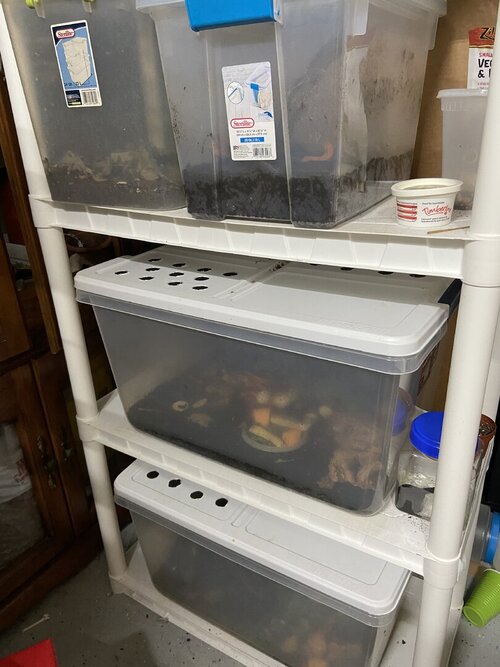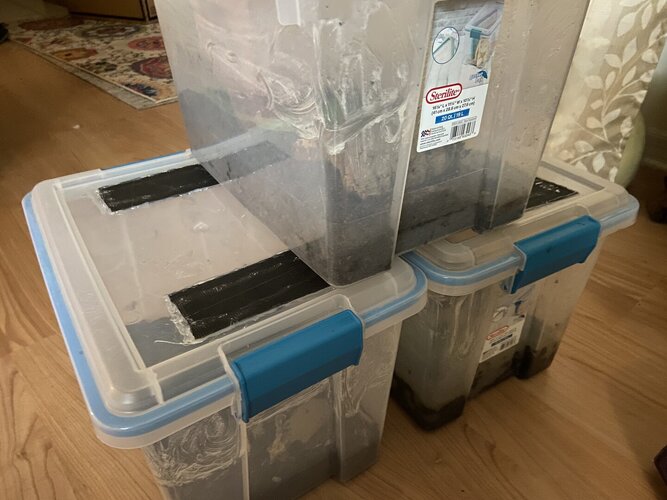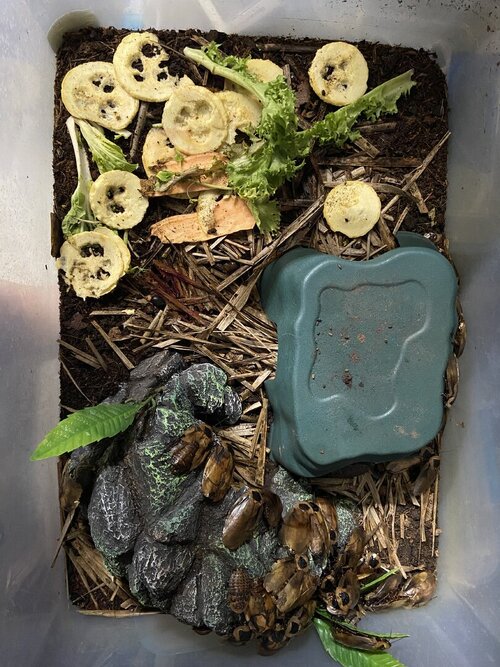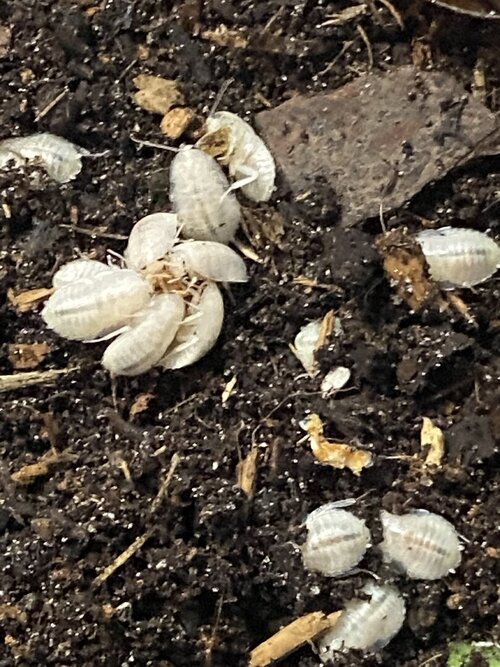ToastyCham
Avid Member
Once you had put them in their bin or whatever you keep them in, how long did it take for them to start breeding?
Follow along with the video below to see how to install our site as a web app on your home screen.
Note: This feature may not be available in some browsers.
Oh geez…it’s been almost 5 years since I started my colony. I do remember that I initially put them in a very large bin with just some egg crate and it seemed like they never ate much and never made many babies for the longest time. I did have a heat mat on them since it was cooler weather. Once I gave them a bioactive set up in a slightly smaller bin, that was when they finally got busy. I can’t be certain, but I think the first bin was way too big and they were probably too separated from each other. Their food was in the open area between egg crates, which is probably why they didn’t eat well. I do know that they seem to enjoy burying themselves in soil and when given just one hide, (I like to make them a cork bark house if I can) they stick together and are better able to find each other for breeding. I’m going to say to give them at least a couple of months to get established. About every 2-3 months I remove the nymphs from my breeding adult bin. I do leave a few to continue to grow and keep the colony going. I also every now and then (maybe once a year) will order some more to add fresh genetic material to the colony.Once you had put them in their bin or whatever you keep them in, how long did it take for them to start breeding?
Thank you so much! This really helped a lot.Oh geez…it’s been almost 5 years since I started my colony. I do remember that I initially put them in a very large bin with just some egg crate and it seemed like they never ate much and never made many babies for the longest time. I did have a heat mat on them since it was cooler weather. Once I gave them a bioactive set up in a slightly smaller bin, that was when they finally got busy. I can’t be certain, but I think the first bin was way too big and they were probably too separated from each other. Their food was in the open area between egg crates, which is probably why they didn’t eat well. I do know that they seem to enjoy burying themselves in soil and when given just one hide, (I like to make them a cork bark house if I can) they stick together and are better able to find each other for breeding. I’m going to say to give them at least a couple of months to get established. About every 2-3 months I remove the nymphs from my breeding adult bin. I do leave a few to continue to grow and keep the colony going. I also every now and then (maybe once a year) will order some more to add fresh genetic material to the colony.




Thank you for the advice.I use a large, dark bin that I have vent holes in the top of. I keep a seedling mat under one side of it so that the roaches have a hot and a cold side to choose from. I keep the hot side in the high 80s, the cool side is mid to high 70s. I do rows of egg crate on each side (try to keep them vertical so most of the poop falls down)!
I keep a wet and a dry food tray in for them. The dry dish has Repashy bug burger. The other tray I put fresh fruits and veggies on daily. I don’t use those gel moisture cubes, because they can cause problems with reptiles eating them if they’re stuck to the roaches or ingested by them. They get their moisture from the fresh produce.
When I clean the bin, I always wear gloves and an N95. People do develop allergies to the frass, so limiting exposure is a good idea (that’s also me being a paranoid nurse).
You’ll want start with 1 adult male to every 4-5 females. The males will fight and injure each other if there are too many. It typically takes 30-60 days for the females to give birth. Warmer = faster reproduction.
I use a stack of 5 gallon buckets, each with different sized holes drilled in the bottom to sort the roaches. If you search dubia roach sorting online, there are videos. I dump the roaches in the top bucket and then the roaches crawl down through the levels, leaving the biggest at the top and smaller roaches in each lower bucket.